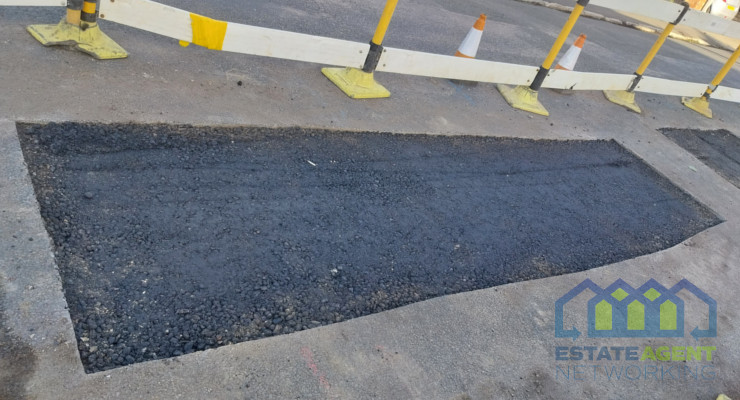5 Ways to Maximize Your Make-Or-Buy Decision
The current economic uncertainty has prompted companies to pay more for their business resilience. They’ve learned how to be ahead of the competition on the value chain and from end consumers by adapting and responding to fluctuations quickly.
For product-oriented businesses, one of the common ways for them to gain a competitive edge in a dynamic market environment is through a make-or-buy decision. The “make” part is about developing a product in-house, while the “buy” part is outsourcing its production from external vendors.
Here are some tips to help maximize a make-or-buy decision.
Identify “Parts”
The term “parts” collectively refers to a business’s products, parts, and processes. They must be thoroughly evaluated for companies to know where they stand in terms of costs, demand, and capacity utilization.
For example, companies must forecast demand for all parts. This is crucial in determining future production requirements, including which machines to use and the period they have to be used in the production process of each part.
An in-depth understanding of these evaluations enables companies to accurately identify the total cost of each part’s internal production. Besides getting precise estimates, it also helps companies compare in-house production costs with external vendors’ offers.
Assess Strategic Value and Cost Advantages
Whether a company produces its parts internally or externally, its choice will always have a strategic value. When the expected result is high, the decision is said to have a high strategic value.
Here are some examples of dimensions that a company has to assess to get the strategic value of a make-or-buy decision:
-
Flexibility. Considering flexibility enables a company’s variable costs to preserve its profit margins. It also gives them revenue streams without risking its underutilization of capacity. These benefits are usually factored in against risks common in outsourcing arrangements, such as those related to supply continuity and intellectual property protection.
-
Operational issues and consumer behaviors. For in-house production arrangements, a company must compare its structural advantages with potential suppliers. Particularly, they must factor in customer expectations. They often favor internal production since they prefer high-quality, consistent, short-supply chains.
-
Relative cost position. A company has to determine and evaluate the most potential supplier’s site, capability, and capacity. This will ensure cost reduction and revenue generation. They can use quantitative models and tools that incorporate productivity, labor development costs, local parameters, and energy costs to maximize relative cost position and savings potential for the next five to ten years.
Companies must determine the strategic value of their make-or-buy decision since it’s directly related to a company’s profitability. Not only financial health, but it also affects a business’s goals, core competence, cost structure, and customer service.
Generate Sourcing Combinations Scenarios
The results of the assessments of each part’s strategic value and relative cost position can be utilized to create holistic scenarios that can help companies determine the optimal make-or-buy decision.
For example, the results can help a company realize whether producing parts with a favorable cost position in-house is financially smarter than outsourcing parts with a negative cost position or vice versa.
In general, parts with high strategic value are kept in-house. This is because they’re more affordable to produce in-house than outsourcing them. Examples of these are parts with solid interdependencies.
However, there are instances when high-strategic items have to be outsourced, usually because making them internally is more expensive than buying them. In this case, a company has to improve its products’ relative cost position to increase value from in-house production. Alternatively, they can hand the production over to an external supplier, but they must factor in their future development and process innovation potentials beforehand.
Apart from lower in-house production costs, most companies are recommended to produce parts internally instead of externally for two reasons. First, accessing suppliers is difficult. Second, making parts themselves allows companies to focus on core strategic products.
Opt for the Best Scenario
The best scenario has the best value creation potential evaluated through financial and non-financial categories. On the one hand, as its name implies, the financial part involves all cost-related factors and potential annual cost-savings.
On the other hand, the non-financial part involves supply-related factors. These include product quality maintenance, innovation opportunities, supplier availability, and supply risks, such as supply chain and country risks.
Prepare to Implement
In-house production is typically easier since each part is within a business owner’s reach. Conversely, if a scenario calls for outsourcing, a company must choose suppliers with the necessary production technologies and available capacity.
However, not all companies, especially start-ups and small and midsize enterprises (SMEs), can afford outsourcing costs. On a positive note, there are alternative lenders that can help new and small businesses nowadays.
Alternative lenders typically offer fixed rate loans online and even customized loans based on a company’s financial capability and needs. The best part is they’re usually offered regardless of a business’s current credit and income.
Another factor is that finding a supplier that can take large production volumes is difficult and time-consuming. It’ll take even longer if the production process requires innovative ideas and close collaboration.
Final Thoughts
Overall, a make-or-buy decision utilizes cost-benefit to distinguish the most cost-effective approach. This strategic choice helps companies lower costs and increase capital investments, despite during inflationary periods.









